Language
- English
- Español
- Français
- Italiano
- Português
- Deutsch
- Nederlands
Currency
- AUD Australian Dollar
- CAD Canadian Dollar
- EUR Euro
- GBP Pound Sterling
- USD US Dollar
- ZAR Rand

Weighing as much as three family cars, you'd think that an elephant would make a racket when moving through the wilderness. Instead, they have the unnerving habit of appearing out of the landscape without warning, strolling unstoppably towards a favourite waterhole, riverbank or fruiting trees.
They use deep rumbles to communicate over great distances and share our human awareness of family bonds and community. I have seen them stroke the bleached bones of a long-dead companion, their trunks lingering over the skull tenderly. An elephant herd is headed by a matriarch who knows the migration trails between fresh water and new pastures, leading her family safely across sometimes vast distances. The adult females fuss over their babies and keep a watchful eye on the boisterous teenagers. Adult males live in bachelor packs while retired bulls gather at waterholes like so many grumpy old men in a park, back legs crossed to ease their joints and trunks ready to trumpet in annoyance at the slightest provocation.
Loxodonta africana – Africa's big-eared savannah elephant – once ranged from the continent's Mediterranean coast to its southern tip – the last ones were seen on the Cape Peninsula in 1620. Yet despite centuries of ivory merchants and trophy hunters, elephants are still found in great numbers in protected reserves – often, when the first elephant is seen, a game drive really springs to life.
You can still witness the great herds if you know when to go since these creatures naturally move with the seasons. To make it easy for you, here's my round-up of when and where to go in Africa to see elephants.
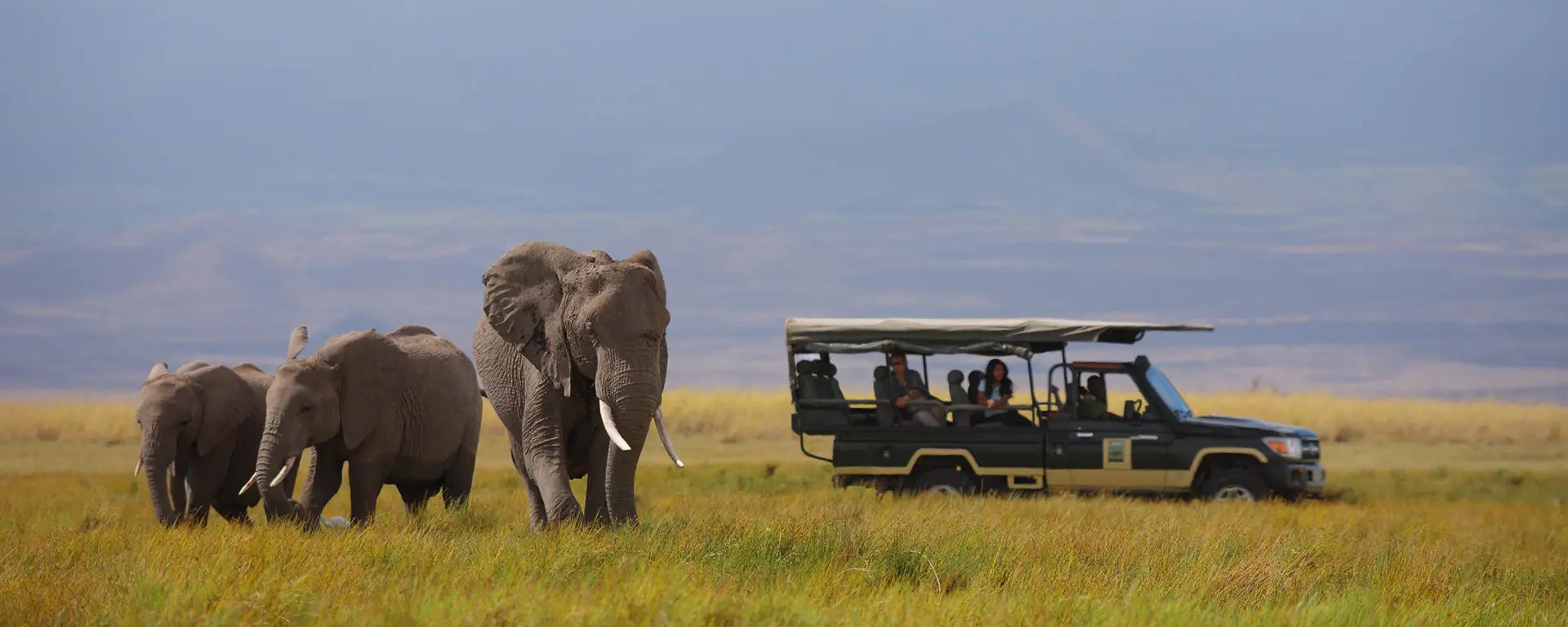
Forming the northern boundary of the Chobe National Park, the Chobe River and its surrounding floodplains and forests support tens of thousands of elephants. Working there in the 1990s, I sometimes had to chase them away from our swimming pool! Twenty years later, Chobe’s pachyderms are still thriving.
The river attracts elephants in greater densities as the dry season progresses. There are good numbers from May to August, but you can’t move for big herds in September and October. The riverbanks are lined with elephants in the busy season, making a boat cruise on the Chobe River a truly dramatic wildlife spectacle. After the November rains, when the riverfront’s vegetation has taken a real beating and surface water can be found once more, the elephants head back into the interior.
Retired, old bulls live along the Chobe River all year round so you will always see elephants in the Chobe, but if you want to see herds on a scale to thrill, then dry-season Chobe is my number one recommendation.
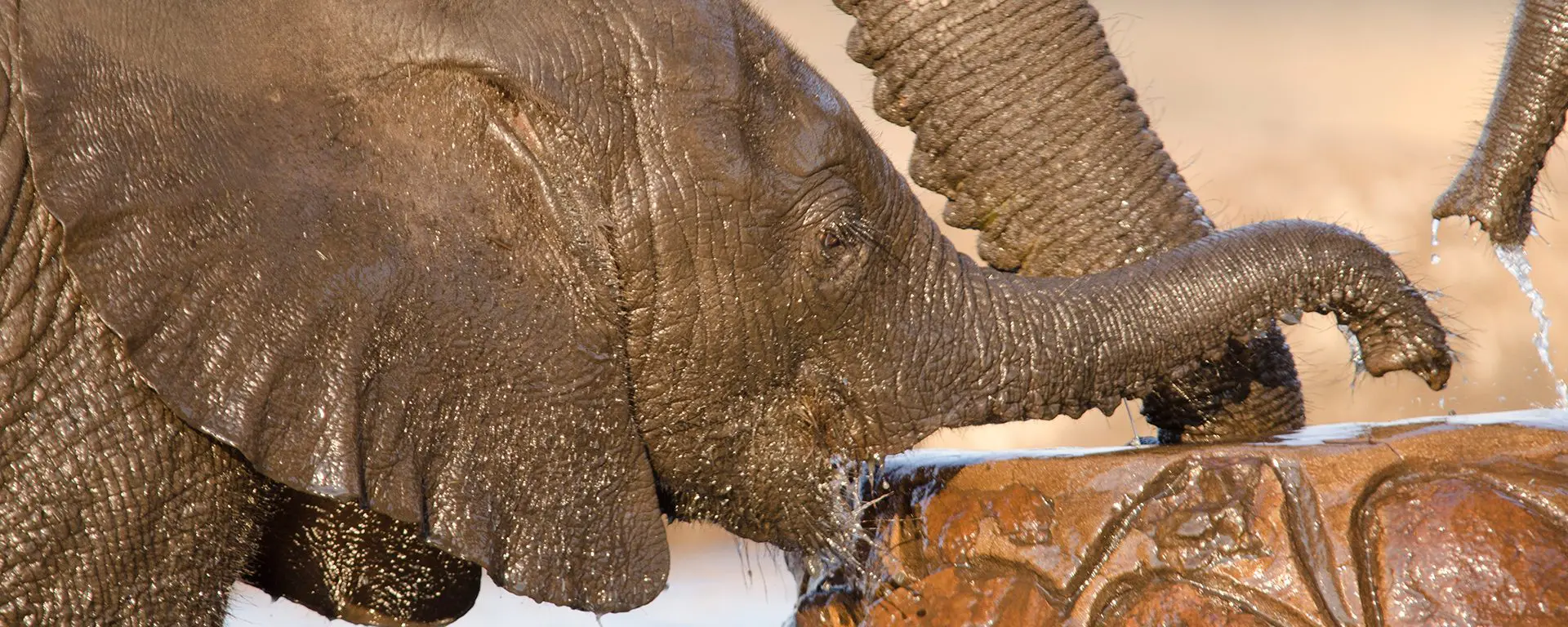
Home to the world’s longest-running elephant research and conservation programme, Amboseli National Park is where biologists first observed some of the most endearing behaviours of these enigmatic creatures. It was here that herds were first recognised as close-knit families, and where elephants were observed celebrating births, forming friendships and grieving over the death of a family member.
It’s thanks to this research, coupled with the support of the local Maasai people, that Amboseli remains a haven for Kenya’s elephants. The landscape is generally flat and open, with only a sparse covering of vegetation but there is plenty of water coming down in streams from Mount Kilimanjaro to form wetlands of lush greenery. Imagine a herd of elephants quenching their thirst against the backdrop of ice-capped Kilimanjaro – if you get the angle right, you’ve got Africa’s biggest animal set against its highest mountain… and a pretty impressive selfie!
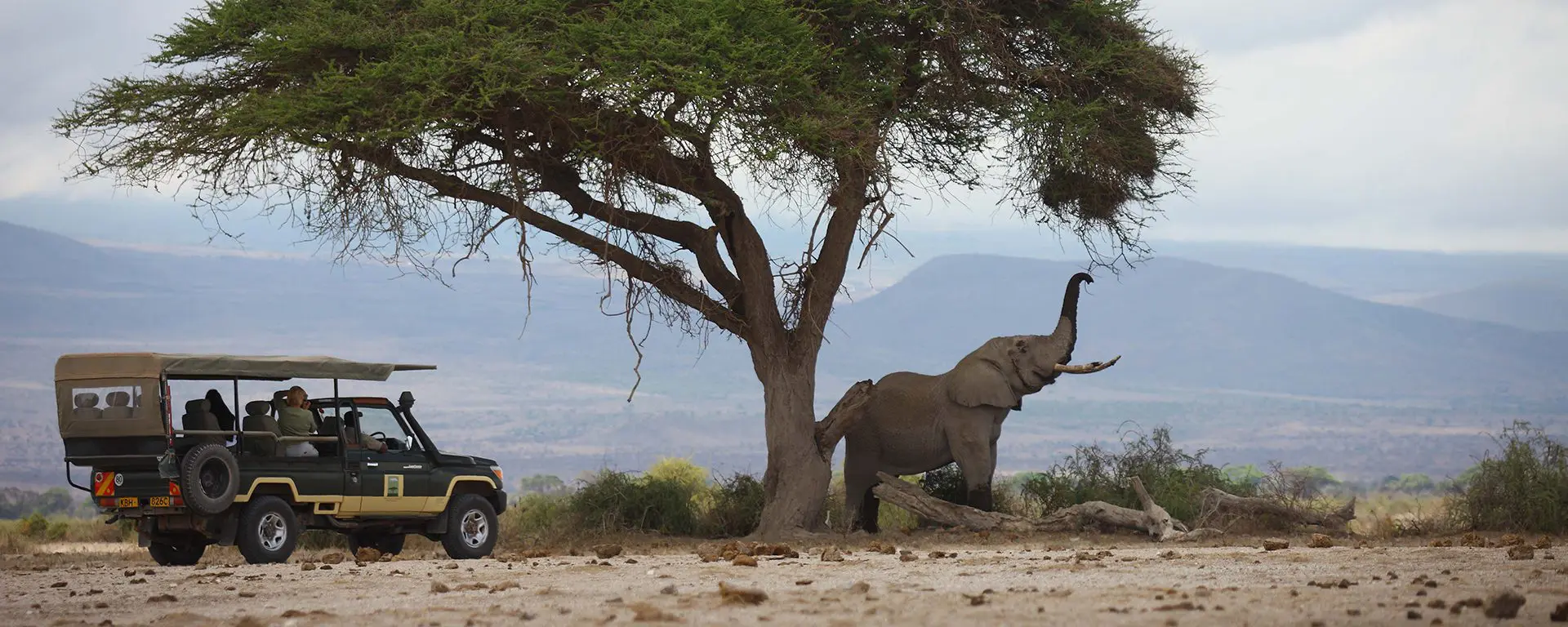
The elephants of Tarangire National Park are red in colour thanks to a coating of fine dust kicked up as they walk between their daily browsing in the dry woodlands and the Tarangire River’s fresh water. Elephants often drink only once per day, which can make the little ones so excited about reaching the cool, fresh water that their trunks wobble like jelly as they run to the riverbank!
Home to around 100 000 elephants, Tanzania has long been a jumbo stronghold. The most famous parks, like the Serengeti, are often vast tracts of rolling grassland that are better suited for grazers like wildebeest, zebra and antelope. Other reserves like the Nyerere National Park (previously Selous) are so enormous that their elephant populations are spread thinly. But at Tarangire, you’ll stand a good chance of seeing elephants in herds that are an awesome 300-strong.

Located on the border between Botswana and Zimbabwe, Hwange National Park is an enormous tract of jumbo-friendly open woodland that spills across the border from Botswana. Elephants roam freely between the two countries, foraging between the Chobe and Zambezi Rivers and Hwange’s permanent waterholes.
The waterholes are critical way-points for migrating elephants, their locations passed down through the generations by herd elders. All you have to do is park in the shade on a hot afternoon and wait for the show to start. Males are the first to arrive, in knots of swaggering bachelors or quiet old gentlemen, followed by breeding herds of calves, teenagers and watchful mothers, all led by a regal matriarch. Elephant watching in Hwange is best in the dry season – the late winter months of August to October.
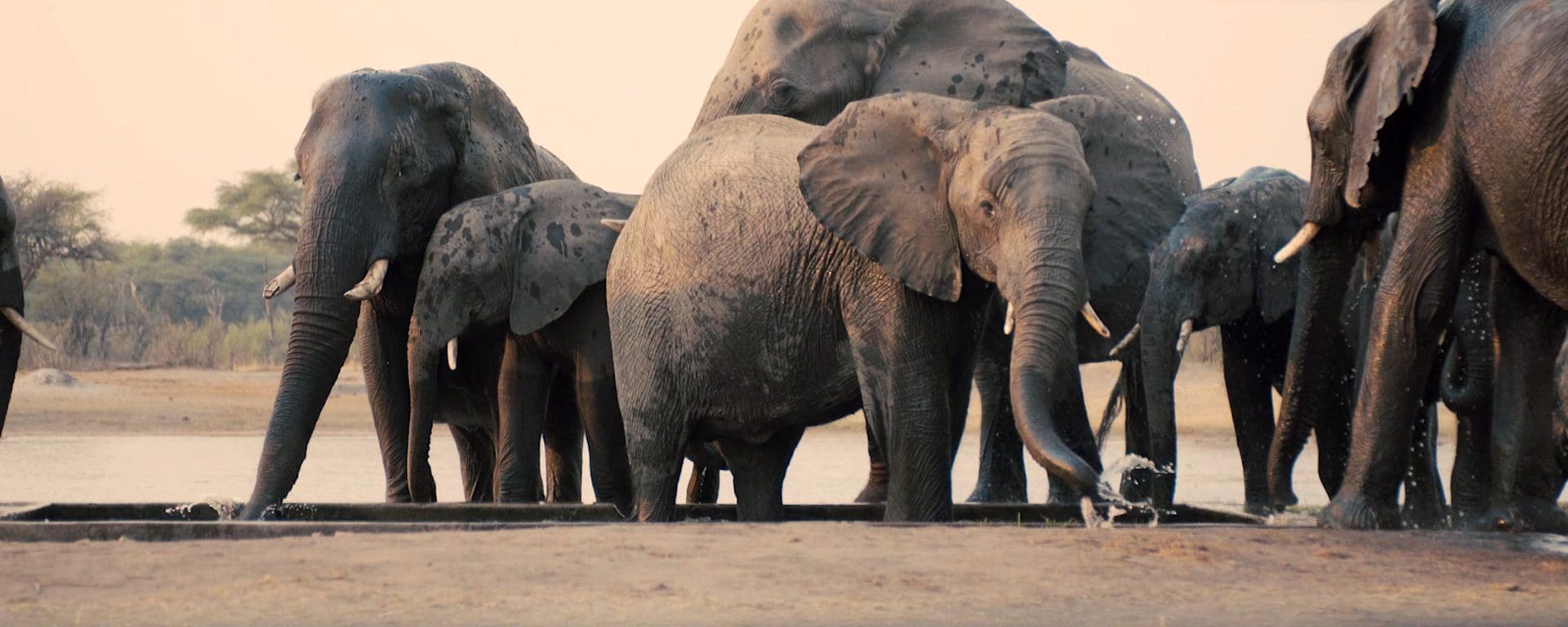
As the name promises, Addo’s main attraction is the elephant. You don’t need to travel into the back of beyond either – the park is conveniently located along the Cape’s famous Garden Route, an hour’s drive from Port Elizabeth. This sanctuary shows us what the wildlife of the Eastern Cape was like before the arrival of gunpowder – hundreds of elephants live here alongside buffalo, lions and rare black rhinos.
All this megafauna (a fancy word for large animals) is good news for Addo’s visitors. Malaria-free and famous for its year-round temperate weather, the Eastern Cape is perfect for families with young children who want all the thrills of a big game safari within easy driving distance of urban centres. The bottom line? Addo is not a vast wilderness and it does get busy during holiday seasons, but it’s also an easy place to see lots and lots of elephants without the risk of malaria.
How to do it: Self-drive holidays are a great option for the gorgeous Garden Route – hire a car in Cape Town and take a comfortable drive along the coast, stopping in gorgeous seaside towns before reaching Addo, then fly out of Port Elizabeth. I recommend the park’s private concessions – River Bend Lodge is set on 14 000 hectares and overlooks a busy elephant waterhole.
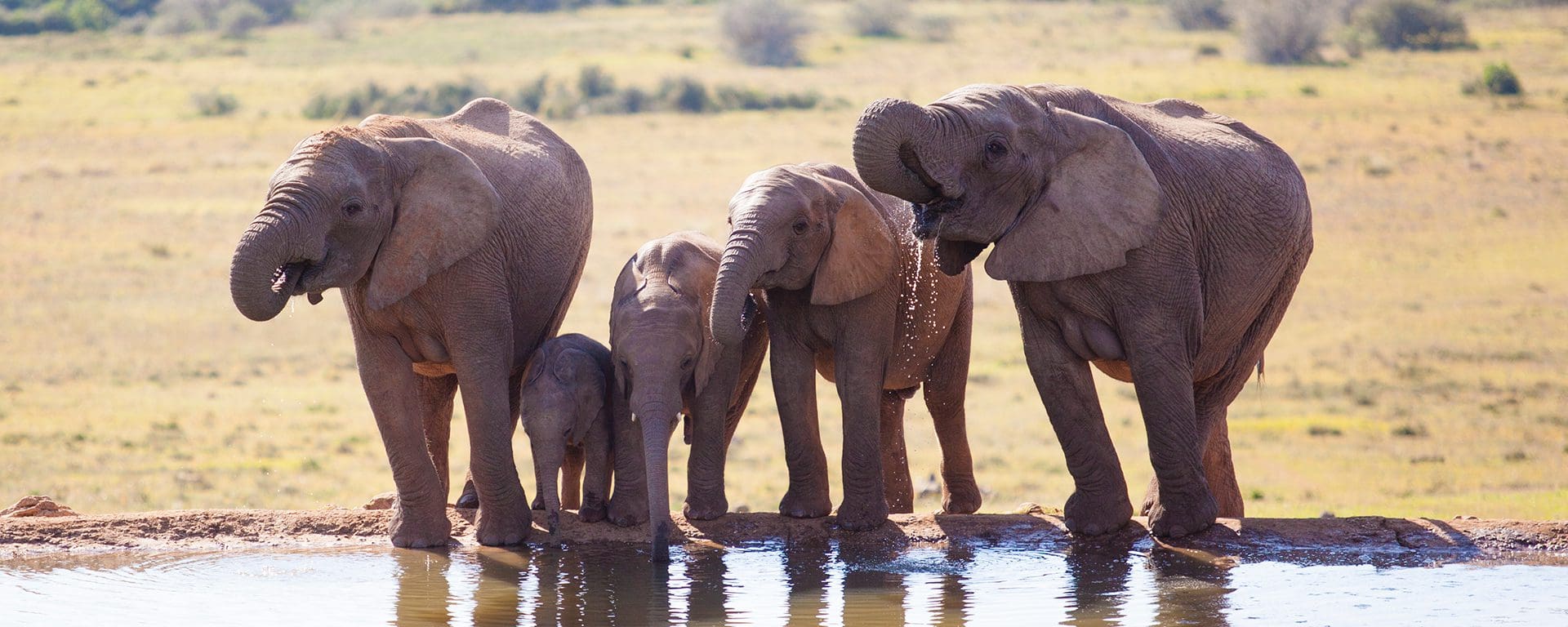
This is where the concept of elephant back safaris and walking with elephants was pioneered. Welcome to the jewel of the Kalahari, the Okavango Delta. Botswana’s lush wild heart is home to a huge diversity of animals and birds – it’s a place of big cats and wild dogs, hippos and crocs, and plenty of elephants. They wallow in the shallows beside papyrus-lined lagoons and cross open floodplains to reach the delicacies of fruiting trees.
And if all the natural splendour isn’t enough, the Okavango Delta offers you the chance to interact with tame elephants in their natural world. It’s a real and humbling experience that often inspires a sense of quiet wonder in those lucky enough to spend time in this pristine wilderness in the company of elephants.
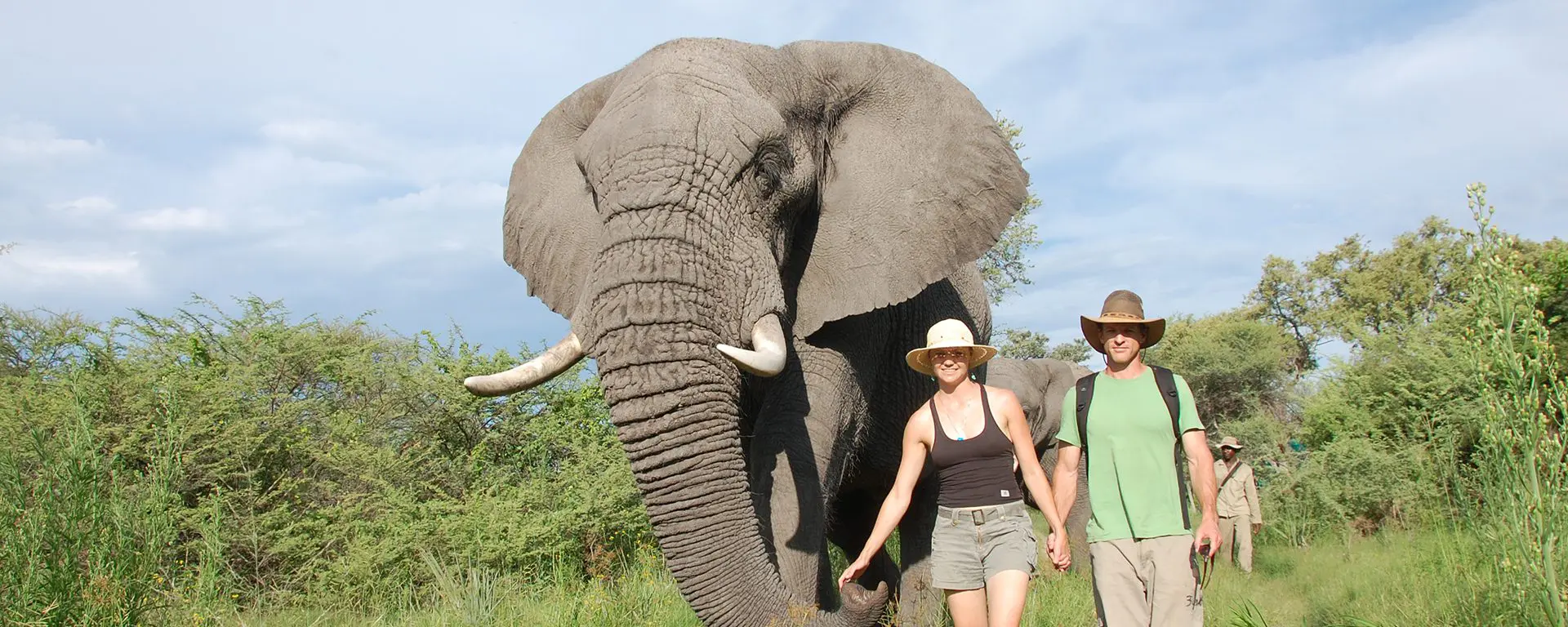
The African elephant is perhaps the continent’s most iconic animal. Prehistoric in size and part of our childhood tales and collective imagination, elephants occupy a special place in our hearts. I hope you find yourself in the dry season in one of the sanctuaries where these gentle giants still thrive, seeing firsthand their affectionate family bonds and the adorable antics of their babies, witnessing for yourself the grace and beauty of elephants living wild and free in their natural habitat.